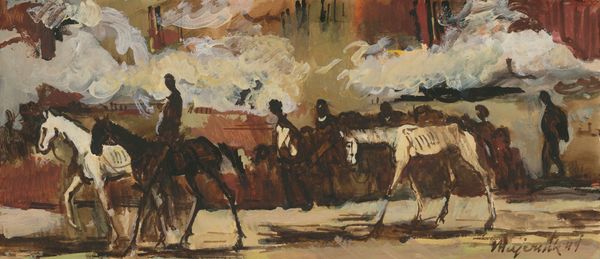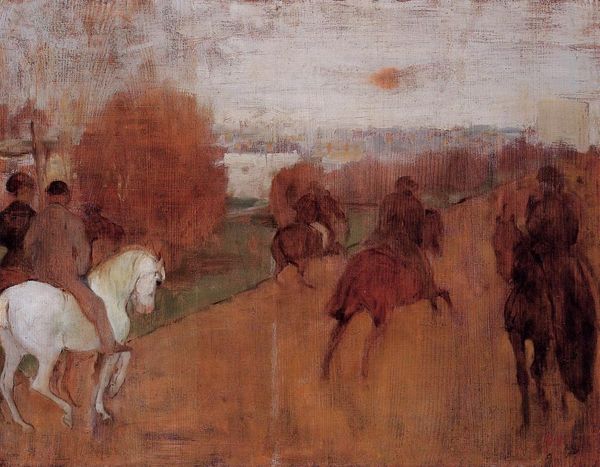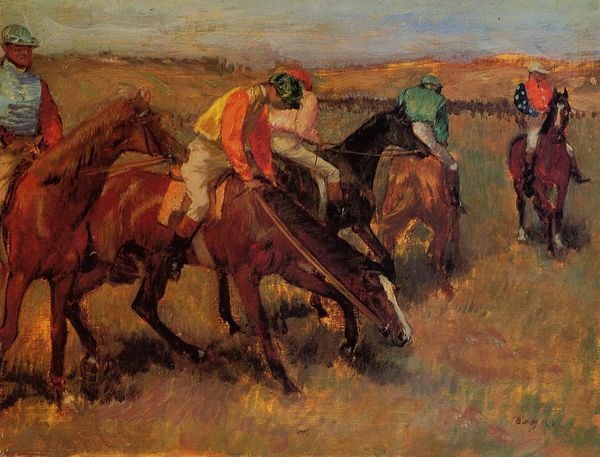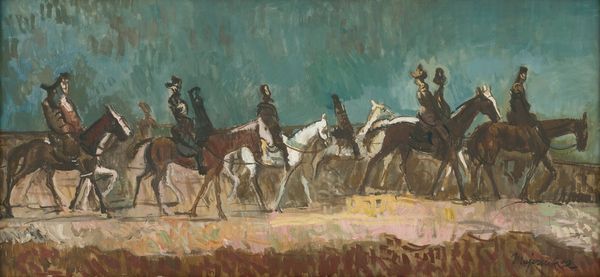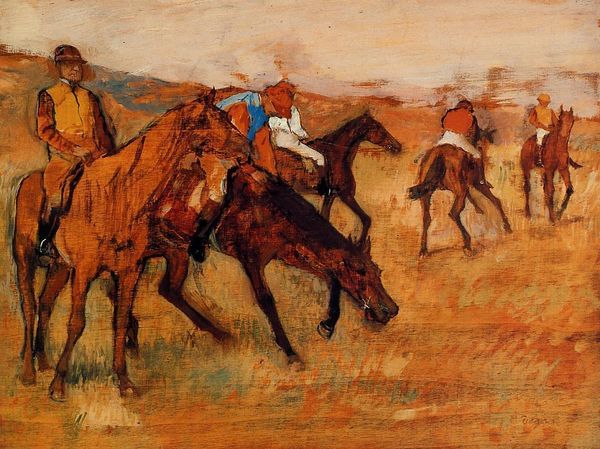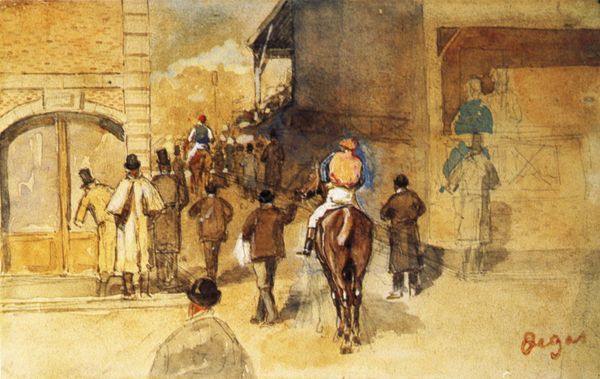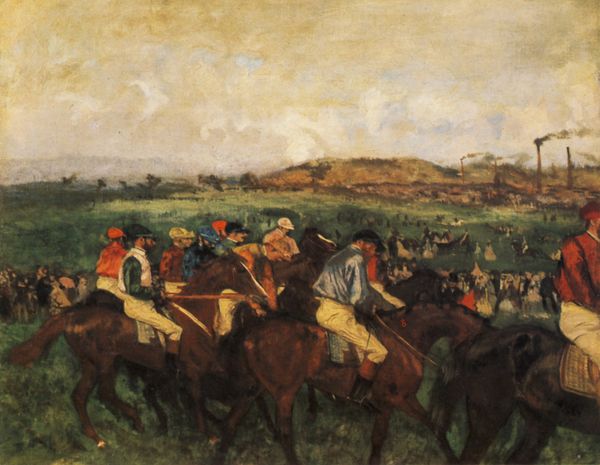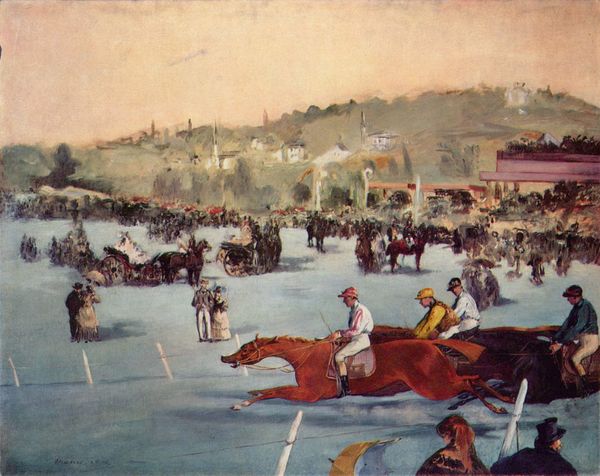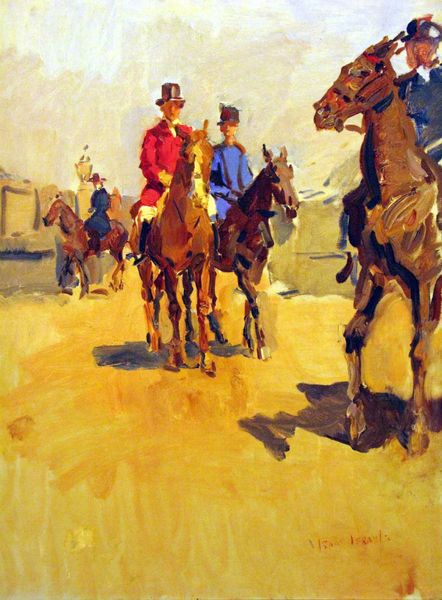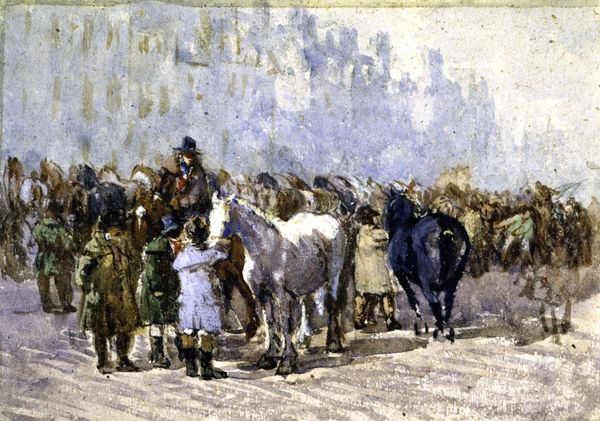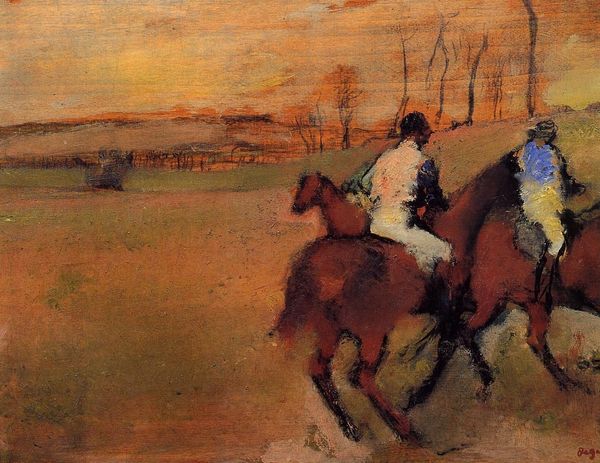
plein-air, oil-paint
#
impressionism
#
plein-air
#
oil-paint
#
landscape
#
figuration
#
oil painting
#
horse
#
men
#
genre-painting
#
modernism
Copyright: Public domain
Curator: Let's take a closer look at Edgar Degas' "The Parade (Racehorses in Front of the Stands)," painted around 1868, currently housed here at the Musée d'Orsay. Notice how Degas captures the pre-race atmosphere at a horse race, the figures milling about before the event. Editor: Right away, it feels like a snapshot, almost like a fleeting memory captured on canvas. I love how the shadows stretch out so dramatically, making the scene feel vast and open, yet slightly melancholic. Curator: The material choices here are important. Degas utilized oil on canvas, but his application is quite modern for the time. The sketchy, unfinished quality reflects the burgeoning Impressionist movement, breaking from the traditional, polished academic style. One could argue that the real subject is not the race, but rather the visual sensation, the light, and the moment. Editor: Absolutely. It’s like he’s showing us not just a horse race, but the anticipation, the buzz, almost a nervous energy vibrating in the air. The blurred faces in the stands and those long shadows create a real sense of depth and draw me right in. What were these people wearing, what were they saying? You can almost hear the hushed murmurs. Curator: Degas was fascinated by modern life, and racecourses were sites of industry, class, and spectacle. These were places where social status was both performed and reinforced. By focusing on the parade rather than the race itself, Degas subtly comments on the spectacle of social stratification, showing us the social relations involved in leisure activities, and all through close observations of labor within the horse industry. Editor: The perspective is fascinating too – a bit tilted, a bit off-kilter. It's almost like Degas is saying, "Life isn't perfect or neatly composed." It adds to the sense of immediacy. I get the impression he was looking for a kind of authenticity by refusing conventional compositions. Curator: Indeed. This painting, like much of Degas' work, is a fascinating document of its time, reflecting evolving notions of leisure, class, and representation, all conveyed through the materiality of paint. Editor: It’s an artwork that makes you stop and reflect. A race before the race, maybe the most beautiful and real part.
Comments
No comments
Be the first to comment and join the conversation on the ultimate creative platform.

